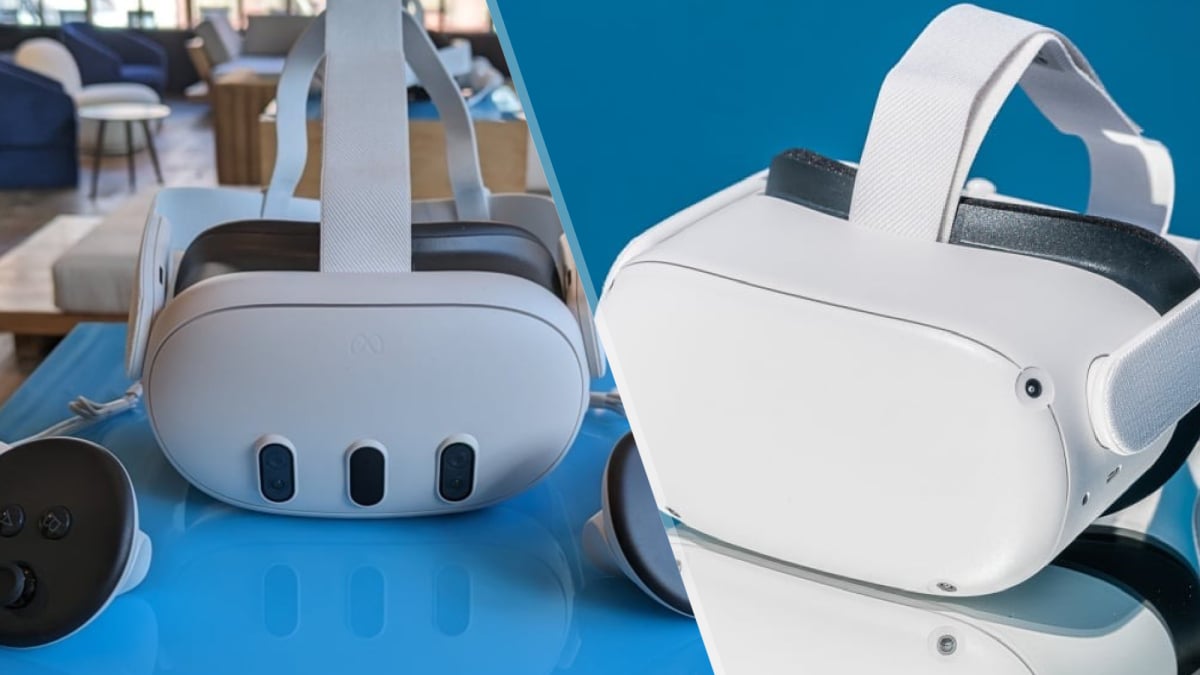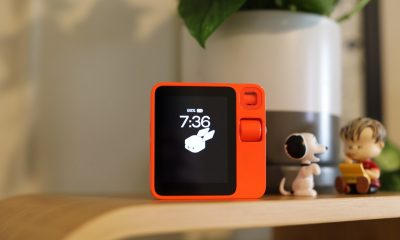Entertainment
Meta Quest 3 vs. Quest 2: What are the differences?

Meta gave us the skinny on its new Quest 3 VR headset at Connect 2023. Of course, the first thing on everyone’s minds is: Why should I get this instead of Quest 2?
On the surface, it’s an easy question to answer. The Quest 3 is four years newer, which means it’s four years more advanced. Its specs outshine the Quest 2 on paper, which means it has more capabilities under its belt. Consequently, it supports a wider variety of VR games and experiences.
But let’s discuss the most significant difference between the two: the Quest 3 supports mixed-reality experiences while its predecessor only supports immersive VR content. In other words, with the Quest 3, VR gaming will incorporate the room you’re standing in — the Quest 2 can’t do the same.
But that doesn’t mean the Quest 2 just became worthless overnight. There’s still some gas left in its tank. Let’s examine why. (You should, by the way, trust my judgment on this because I own the Quest 2 and I’ve had a chance to test the Quest 3.)
Meta Quest 2 vs. Quest 3: Specs
Before we get into anything else, it’s important to distinguish these two headsets by their specs. You can probably guess which headset is going to win this category. It’s not really a fair competition. Anyway, here’s how the specs look for both devices:
-
Quest 2: 1832×1920 resolution per eye, up to 90Hz refresh rate
-
Quest 3: 2064×2208 resolution per eye with 90Hz refresh rate
-
Quest 2: Snapdragon XR2 processor
-
Quest 3: Snapdragon XR2 Gen 2 processor
-
Quest 2: 128GB or 256GB storage
-
Quest 3: 128GB or 512GB storage
-
Quest 2: 6GB RAM
-
Quest 3: 8GB RAM
-
Quest 2: 2-3 hours of battery life
-
Quest 3: 2-3 hours of battery life
There’s really no reason to waste time on this. The Quest 3 is a better headset specs-wise than the Quest 2 because it’s several years newer. That’s no slight on the Quest 2, which was a perfectly good untethered VR headset when it came out and is still a solid one today. But the Quest 3 has better screen resolution, a stronger processor, more storage, and more memory.
I wish it had more battery life, too, but you can’t always get what you want.
Winner: Quest 3
Meta Quest 2 vs. Quest 3: Comfort
This is another category where the Quest 2 doesn’t really stand a chance.
Meta set out to make the Quest 3 more comfortable than the Quest 2. That makes this a losing battle for the older of the two headsets pretty much by default. Quest 3 has a new strap system for perfecting the fit on your head and it’s much slimmer than Quest 2, but the weight difference (515g on Quest 3 and 503g on Quest 2) is negligible.
I’ve had the privilege of wearing both headsets and there’s really no contest. Quest 3 is more comfortable to wear than Quest 2.
Winner: Quest 3
Meta Quest 2 vs. Quest 3: Controllers
Stop me if you’ve heard this before: Meta Quest 3’s controllers, by virtue of being newer and slightly more advanced, are better than the Quest 2’s controllers.
That said, the gen-over-gen difference is minute. Meta redesigned the Touch controllers for Quest 3 so they don’t have that weird ring that wrapped around your thumbs anymore. It’s a more open and airy design that otherwise retains the same general shape and button layout. The only other major difference is the addition of haptic feedback, so you’ll really feel it when you do things like pull back the drawstring on a bow.
Even with those enhancements in mind, the two controllers are equally as responsive in terms of motion tracking and button inputs, so baseline playability isn’t an issue either way. Quest 3 notches another win under its belt, but not by much.
Winner: Quest 3
Meta Quest 2 vs. Quest 3: Features and library
If this feels like a bit of a bloodbath so far, it’s only going to get worse.
By the standards of 2019 VR headsets that don’t require gaming PCs, the Quest 2 is great. Drawing a play boundary using its black-and-white passthrough feature is easy. VR games and applications like Beat Saber, VRChat, and Wander work very well on Quest 2. If you view the device in the proper context, there’s absolutely nothing wrong with what’s on offer.
If you decide that context is for jerks, the Quest 3 is obviously better. Its full-color passthrough is miles ahead of what Quest 2 had to offer (speaking from experience), giving users a crystal-clear view of their surroundings. Scanning the play area is done automatically, so you don’t need to manually draw one anymore. And most importantly, Quest 3 is a proper mixed-reality headset instead of just a VR headset. Games and apps can utilize the passthrough features to place objects, characters, and anything else in the real world in front of you. The Quest 2 can’t do that.
Oh, and Quest 3 can play every Quest 2 game and app, while also supporting new and upgraded versions of content the Quest 2 can’t access.
Winner: Quest 3
Meta Quest 2 vs. Quest 3: Price and verdict
You pretty much get the picture at this point. In every way that matters, the Quest 3 is a better headset than Quest 2. Well, almost every way that matters.
Quest 3 starts at $500 and goes all the way up to $650 if you want more storage. Quest 2, meanwhile, is a measly $300 by comparison. This is the reason why I keep insisting Quest 2 is still worth considering. It’s a substantially cheaper headset that’s already proven itself over the years, with strong functionality and a robust library of games and experiences. If you have never tried VR before, it’s a really great way to get your foot in the door.
If you have tried VR and want the greatest of the greatest (without a gaming PC), Quest 3 is obviously the way to go. But that doesn’t mean Quest 2 is a worthless hunk of junk. It still has a place.
Winner: Quest 3, unless you feel like saving $200 and don’t care that much about AR
-

 Business6 days ago
Business6 days agoGoogle Gemini: Everything you need to know about the new generative AI platform
-

 Entertainment7 days ago
Entertainment7 days ago2024 summer TV preview: 33 TV shows to watch this summer
-

 Business4 days ago
Business4 days agoHaun Ventures is riding the bitcoin high
-

 Entertainment6 days ago
Entertainment6 days ago‘Bridgerton’: Everything you need to remember before Season 3
-

 Entertainment4 days ago
Entertainment4 days agoHands-on with the Claude AI app: It’s pleasant to use, but janky
-

 Entertainment3 days ago
Entertainment3 days agoApple Watch Series 9 vs. SE: A smartwatch skeptic tested both for 13 days
-

 Entertainment4 days ago
Entertainment4 days ago5 essential gadgets for turning your home into a self-care sanctuary
-

 Entertainment5 days ago
Entertainment5 days agoHow to unblock porn sites: Greatest VPN for porn in 2024



























